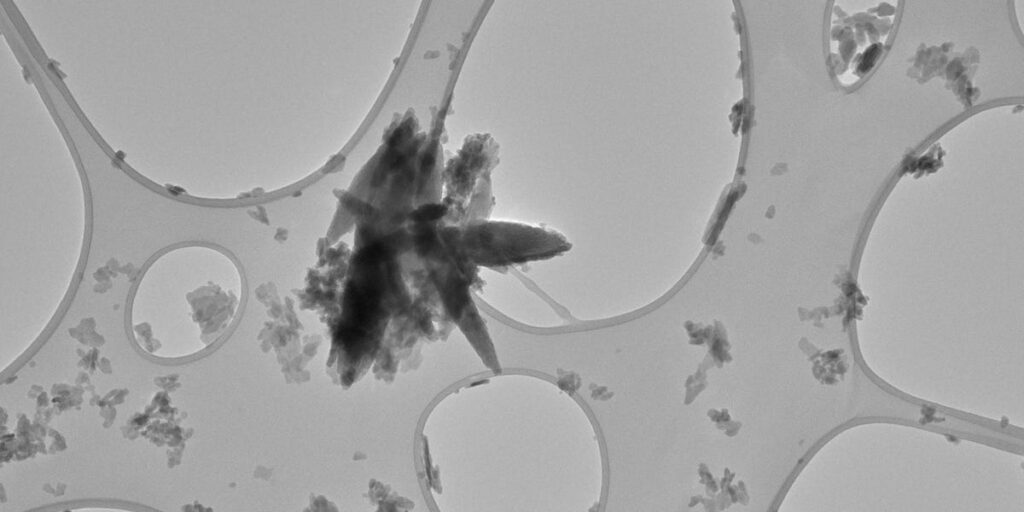Tiny, microscopic bits of plastic have been found almost everywhere researchers look — including throughout the human body.
Microplastics and their even tinier cousins, nanoplastics, are probably flowing through your blood and building up in your organs like the lungs and liver.
Now, a new study is connecting the dots on microplastics’ mysterious correlation with heart attack and stroke risk.
“There is some microplastics in normal, healthy arteries,” Dr. Ross Clark, a University of New Mexico medical researcher who led the study, told Business Insider before he presented his findings at the meeting of the American Heart Association in Baltimore on Tuesday.
“But the amount that’s there when they become diseased — and become diseased with symptoms — is really, really different,” Clark said.
Clark and his team measured microplastics and nanoplastics in the dangerous, fatty plaque that can build up in arteries, block blood flow, and cause strokes or heart attacks.
Compared to the walls of healthy plaque-free arteries, plaque buildup had 16 times more plastic — just in the people who didn’t have symptoms. In people who had experienced stroke, mini-stroke, or vision loss, the plaque had 51 times more plastic.
“Wow and not good,” Jaime Ross, a neuroscientist at the University of Rhode Island who was not involved in the study but has studied microplastics in mice, told BI after reading the results.
“It’s very shocking to see 51 times higher,” she said, adding that in her research, a signal that’s just three times stronger is “very robust and striking.”
What exactly the plastics are doing in there, if anything, remains a mystery. The new study offers some possible clues, though.
This research has not yet undergone the scrutiny of peer review, but Clark said he plans to submit it for publication in a peer-reviewed scientific journal later this year, after replicating some of their results.
Genetic activity looked different with plastic
Clark is a vascular surgeon, not a microplastics specialist. However, he got the idea for this study by talking with his colleague Matthew Campen, who recently discovered that human brains contain a spoon’s worth of plastic.
“We realized together that there really wasn’t a lot of data on nanoplastics and microplastics in the vascular system, within blood vessels,” Clark said.
Previous research had found that people with microplastics in their arterial plaque were more likely to have a heart attack or stroke or die.
To investigate why, Clark studied samples from 48 people’s carotid arteries — the pair of superhighways in your neck that channel blood to your brain.
The difference in plastic quantities surprised him, but his team found another concerning trend, too. Cells in the plaque with lots of plastic showed different gene activity than those with low plastic.
In the high-plastic environment, one group of immune cells had switched off a gene that’s associated with turning off inflammation. Clark’s team also found genetic differences in a group of stem cells thought to help prevent heart attacks and strokes by reducing inflammation and stabilizing plaque.
“Could it be that microplastics are somehow altering their gene expression?” Clark said.
He added that there’s “lots more research needed to fully establish that, but at least it gives us a hint as to where to look.”
Ross, who specializes in the genetic mechanisms behind disease, agreed that more research is needed, but added that she thinks “these plastics are doing something with these plaques.”
‘We just don’t know’
Tracking microplastics in the human body is a new scientific endeavor as of the last couple years. It’s not perfect.
Clark’s team heated the plaque samples to more than 1,000 degrees Fahrenheit to vaporize plastic polymers and break them down into smaller organic molecules, which can be identified and measured by their mass and other properties.
Unfortunately, the lipids in plaque can break down into chemicals that look very similar to polyethylene, the most common plastic found in everything from plastic bags to car parts.
“Because we know about this problem, we’ve taken a lot of steps to remove those lipids and confirm their removal, so that we’re sure we’re measuring polyethylene,” Clark said.
Still, he added, “it’s a big limitation, and it should be acknowledged that these types of methodologies are continuously improving.”
Clark is trying to get funding to further study interactions between microplastics and immune cells in the walls of blood vessels. He hopes to expand this research beyond the carotid artery and also run some animal experiments to test for cause and effect.
“We just don’t know,” Clark said. “Almost all of what we know about microplastics in the human body, no matter where you look, can be summed up as: It’s there, and we need to study further as to what it’s doing, if anything.”
Read the full article here


